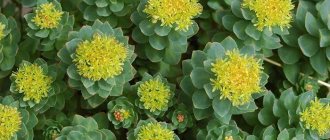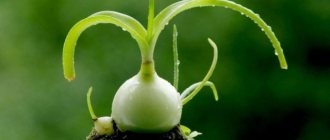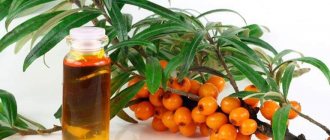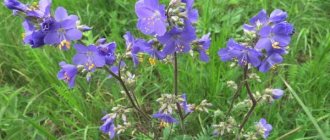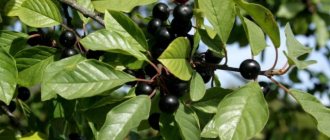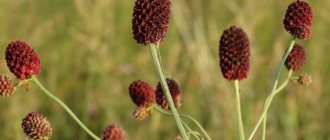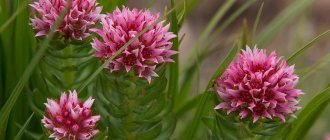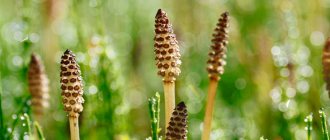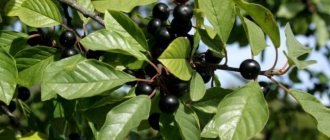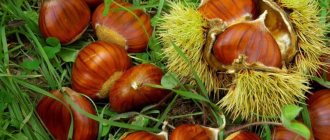This amazing plant, originally from Japan, has not only a luxurious appearance, but also valuable healing properties. A lush and spreading crown, yellow inflorescences of unearthly beauty - this is how they describe the symbol of beauty and health, Japanese Sophora, the medicinal properties of which are put on a par with ginseng. The plant can cure a large number of diseases, which is used by doctors and healers in China, Japan, the Caucasus and Crimea. Sophora can also grow in Russia; the tree is unpretentious and tolerates the rather harsh climate of our latitudes.
Recipes for preparing the tincture of the Japanese miracle are often resorted to - it has become an indispensable healer in almost every family. Its beneficial properties are due to the special chemical composition that the human body needs for normal, healthy functioning. Based on it, you can understand the mechanism of action of Sophora japonica, what the plant heals and why.
Healing effect, indications and contraindications
What are the beneficial properties and contraindications of Sophora japonica? What parts of it are used for medical purposes? How to procure raw materials?
Spreading
Sophora japonica. Botanical illustration from Curtis's Botanical Magazine, vol. 144, 1918.
The tree reaches a height of 25 m. It develops well in the shade, tolerates drought, but is not resistant to frost and strong winds. It grows wild in China, Mongolia, and Japan. Cultivated in the Krasnodar region, Crimea, and the Caucasus. This is a beautiful ornamental tree that is often cultivated in the southern regions.
Blank
The fruits and buds of the plant are harvested as medicinal raw materials. The buds are removed in June-July, and the fruits are cut in September or October. It is advisable to collect them in dry weather and not fully ripe. Dry in natural conditions, with access to fresh air, avoiding exposure to sunlight. Store for 24 months.
Medicinal action
Medicinal properties of Japanese Sophora:
- decongestant;
- antisclerotic;
- pain reliever;
- antitumor;
- hypotensive;
- vaso-strengthening;
- rejuvenating;
- anthelmintic;
- antibacterial;
- regenerating;
- stimulating blood circulation;
- capillary stabilizing;
- hemostatic;
- antioxidant;
- antiseptic;
- immunostimulating.
Useful substances in the chemical composition:
- quercetin;
- vitamin P (rutin);
- vitamin C;
- glycosides;
- fixed oils;
- flavonoids (the most valuable is kaempferol);
- alkaloids (the most valuable pachycarpine);
- organic acids;
- micro- and macroelements.
Indications
For what diagnoses and symptoms can treatment with Sophora japonica be effective?
- Gynecology. It is valued for its antitumor, anti-inflammatory, and antibacterial properties. Prescribed for a number of female diagnoses: vaginitis, cervicitis, fibroids, colpitis, candidiasis, cervical erosion, salpingitis. It also stops uterine bleeding, inflammation in the uterus and fallopian tubes, eliminates the causes of infertility, and improves the functions of the reproductive system. It is used internally, but is also used externally in the form of douches. In addition, it is recommended to take it during menopause. The herb normalizes hormonal levels and relieves the unpleasant symptoms of hot flashes during menopause.
- Oncology. Recently, there has been more and more talk about the antitumor properties of this plant. The active ingredients of Sophora stop the growth of malignant cells, prevent the exacerbation of cancer, and inhibit their transition to severe stages. The herb is often prescribed in complex therapy. In advanced forms, the plant relieves swelling and severe inflammation. It is also a powerful natural immunostimulant that supports the body’s defenses during exacerbations and during rehabilitation.
- The use of Sophora japonica fruits for cardiovascular diseases. Rutin, or vitamin P, is the first remedy for heart and joint diseases. Rutin is not produced in the body, so its reserves must be replenished. In addition to Sophora, it is found in the following plants: buckwheat, olives, capers, asparagus, dandelion, rosemary, raspberries, black currants. Sophora helps eliminate cholesterol, prevents the formation of plaques and blood clots, helps with atherosclerosis, hypertension, angina pectoris, varicose veins, and vasculitis. Strengthens blood vessels, stimulates blood supply, reduces capillary permeability. It is considered a preventative against strokes, retinal hemorrhages, and all internal bleeding.
- Cleansing the body. It is a natural antioxidant, removes waste and toxins from the body, cleanses the blood and liver. Helps cope with intoxication of the body.
- Benefits for diabetes. The herb has a beneficial effect on the functioning of the thyroid and pancreas and normalizes hormonal levels. The hypoglycemic properties of the drug have been proven. Used at different stages of the disease only under medical supervision. During the course it is extremely important to follow a diet. Most often, the herb is included in complex therapy.
- Benefits for the gastrointestinal tract. Sophora has an anti-inflammatory effect and heals the mucous membrane well. Most often they drink it for stomach ulcers, gastritis with high acidity, inflammation of the pancreas, worms in the liver, colitis, hemorrhoids, dysentery, and loss of appetite. Folk sources mention that for stomach ulcers, herbal treatment can increase the pain syndrome, which indicates the process of tissue regeneration. But if you experience any side effects, you should definitely consult a doctor.
- External use. The tincture for internal use can also be used externally. It can be used to irrigate, gargle, gums and mouth; compresses and lotions are made from it for rheumatism to relieve swelling and pain; decoctions are used to lubricate the skin for psoriasis, dermatitis, allergies, wounds, cracks, purulent processes, burns, frostbite.
What are the contraindications of Sophora japonica? It is forbidden to use the herb during pregnancy (especially in the first trimester), during the lactation period, or in case of individual intolerance. Children over 3 years of age are given only after medical consultation. Increased doses of rutin and other active substances in the plant can cause nausea, vomiting, diarrhea, pain in the stomach and intestines, and bloating. If these signs appear, you should stop taking the medication and consult a doctor.
How to prepare bear bile tincture
General information
The fact that Sophora has medicinal properties has been known since ancient times.
True, at first the plant was used as a... dye, and only a little later people also learned about the healing properties of sophora. The tree (many called it “crying”) was planted according to tradition near temples - people believed that it helps in healing from illnesses, and also has the ability to read thoughts and pushes a person to make the right decision. The Chinese firmly believed that fragrant flowers prevented strokes, so they were among the first to use parts of the plant to prepare medicinal tinctures and preparations - the plant has established itself as an analgesic and anti-inflammatory agent.
In the mid-18th century (1747), botanist breeders of the Far East began cultural breeding of this plant (mainly as an ornamental).
At the beginning of the 19th century, Japanese styphnolobia was brought to the Nikitsky Botanical Garden (located near Yalta), and then throughout the Crimean peninsula and throughout Ukraine. This tree has taken root just as well in the Krasnodar region, Transcaucasia, the Caucasus, Primorye, Altai, Amur region and Sakhalin.
The tree produces excellent honey and is a decoration for any botanical garden, park or landscape area.
Morphological description
Sophora is a large deciduous tree belonging to the Styphnolobia genus (Fabaceae family).
It can reach a height of 25 or even 30 meters (in the middle zone, growth is more modest - about 10-15 meters). It has a spreading, spherical crown, and the trunk is covered with dark gray, cracked bark. Young branches are green in color (which with time and growth acquire a dark gray tint). The leaves are imparipinnate, shaped like an ellipse , and range from 11 to 25 cm in length (one branch usually has up to 15-17 leaves, 2 to 5 cm long, which fall off in the winter).
The first flowering of Sophora usually occurs 30 years after the start of growth. The flowers exude a rather pleasant aroma and have a pale yellow tint (sometimes yellowish-white), collected in loose panicles up to 35 cm long. Flowering time occurs in July-August; Sophora blooms once every 2 years.
The fruits of Sophora japonica are shaped like beans - they are indehiscent, cylindrical, with distinct thickenings. Outwardly, they look like acacia, which is why they are often confused - but still, the fruits of Sophora are more characteristic and recognizable.
The bean flowers are greenish-brown, over time they acquire a dark red tint , and range in length from 3 to 8 cm. Ripening time occurs in September-October; After ripening, the fruits do not fall off, but stay on the tree all winter.
Chemical composition
The tree, which is not the most well-known to the common man, is directly related to the well-known medicinal drug “Rutin” - it is made from Sophora buds. “Rutin” is an excellent assistant in the fight against heart diseases; it restores blood vessels and prevents the occurrence of atherosclerosis. With its help you can get rid of iron deficiency in the body and vitamin deficiencies.
In addition to vitamin P (rutin) - the main substance - Sophora includes:
- quercetin (lowers blood pressure);
- sophocarpine, matrine, pachycarpine (stimulates the functioning of the muscular system);
- ascorbic acid (strengthening capillary walls of blood vessels, strengthening general immunity, improving blood clotting);
- organic acids (antispasmodic effect, as well as regenerating and anti-inflammatory agent);
- fatty oils (used in cosmetology);
- trace elements and nutrients (iron, magnesium, potassium, calcium, iodine, etc.).
But if rutin itself (vitamin P) has been known since ancient times and is actively used in medicine, then the healing properties of the unique tree have not yet been fully studied and are not fully in demand.
Medicinal properties of Japanese Sophora
The beneficial and medicinal properties of plants are always determined by its chemical composition, in Sophora these are: alkaloids, flavonoids, glycosides, kaempferol, vitamin C. I will not go into the details of these complex terms, since the presence of the substance rutin in the fruits and especially the buds of Japanese Sophora is of greatest value. which has the properties of vitamin P. This substance is not produced by the body, but is very important for it:
- it compacts the walls of blood vessels and reduces their fragility
- reduces blood viscosity
- dissolves atherosclerotic deposits
- calms heart rate
- lowers intraocular and blood pressure
- relieves swelling and cramps
- has anti-inflammatory and antioxidant properties
- stimulates bile formation
- promotes better functioning of the adrenal cortex
- regulates cholesterol levels
- has an antihistamine effect
- helps stimulate the immune system and normalize hormonal levels
- restores thyroid function
- prevents the development of cancer.
In this regard, Sophora japonica can help with a huge number of problems. Even ancient Chinese and Japanese healers believed that sophora could prevent heart attacks, and in Bulgaria it is used to treat baldness.
Even the instructions for use on the pharmacy packaging with fruits contain a large list, but still not the whole list.
What does Sophora japonica treat:
- angina pectoris
- heart attack
- stroke
- atherosclerosis
- cerebrovascular accident
- hemorrhages in the retina of the eye
- internal bleeding
- haemorrhoids
- diabetes
- hypertension
- rheumatism
- diseases of the gastrointestinal tract, kidneys, liver
- ulcerative colitis
- thrombophlebitis
- sepsis
- radiation sickness
- measles
- scarlet fever
- typhus
- diathesis
- allergies
- prostatitis
- periodontal disease
- sinusitis
- skin diseases (psoriasis, eczema, dermatitis, acne, boils, wounds, burns, frostbite, bedsores)
- hair loss
- mastopathy
- fibroids
- goiter
- throat cancer
- fungal diseases.
In each specific case, either an alcohol tincture of Sophora or a water infusion is used, the recipes for which I will give.
Beneficial properties and healing effects of the infusion
Sophora tincture is prepared from fruits, flowers and buds, which contain a large amount of various useful substances:
- phospholipids;
- flavones;
- glycosides;
- amino acids;
- isoflavones;
- polysaccharides.
The plant is rich in vitamins, tannins, and oils. Its buds contain elements important for the human body:
- Rutin helps cleanse, reduce permeability and strengthen the walls of blood vessels and capillaries, and stabilize metabolism. Therefore, the tincture is often used to prevent heart attacks and strokes, as well as in ophthalmology for damage to the vessels of the retina.
- Glycosides improve the functioning of the heart muscle, dilate blood vessels, strengthen the nervous system, normalize the activity of the urinary system, thin mucus during bronchitis and promote its effective elimination, and fight viruses.
- Quercetin strengthens blood vessels, stabilizes blood pressure, protects against radiation exposure, accelerates tissue regeneration and is a good antioxidant. In addition, it helps in relieving inflammatory processes and destroying pathogens.
Sophora flowers contain large quantities of: zinc, calcium, magnesium, iron, potassium, boron, iodine, organic acids and fatty oils. The tincture of this plant cleanses blood vessels well of harmful cholesterol, due to which they become stronger and more elastic. In China, Sophora is placed on a par with ginseng and is considered a natural tonic that can increase life expectancy.
Dried buds and flowers have hemostatic and astringent properties. Preparations made from Sophora are used for:
- nosebleeds and hemorrhoids;
- to stop bloody vomiting;
- for skin diseases;
- diabetes mellitus;
- insomnia;
- atherosclerosis;
- mastopathy and uterine fibroids;
- chronic prostatitis;
- stroke;
- angina pectoris;
- thrombophlebitis;
- ulcerative colitis;
- stomatitis, gingivitis;
- conjunctivitis;
- bedsores;
- psoriasis, eczema;
- ulcers;
- bronchitis and bronchial asthma;
- fungal infections;
- burns;
- boils;
- baldness.
Chemical composition
The uniqueness and diversity of the chemical composition of styphnolobia will be the envy of any medicinal plant. Useful components:
- Alkaloids: matrine, pachycarpine. They relieve pain, eliminate inflammation, and have a hypnotic and sedative effect.
- Flavonoids: quercetin, rutin, kaempferol, genistein. Rutin (vitamin PP) has anti-aging, regenerating effects, normalizes metabolism, strengthens capillary walls. Quercetin lowers blood pressure (BP). Both substances have a calming and antispasmodic effect.
- Ascorbic acid. Increases blood clotting, improves immunity, strengthens the walls of blood vessels.
- Glycosides. Normalize the functioning of the cardiovascular and muscular systems.
- Organic acids. They relieve pain, inflammation, participate in tissue regeneration, kill pathogenic viruses, fungi, and bacteria.
- Macro-, microelements: Ca, Fe, K, I, Mg, Zn, B.
- Fatty oils and linoleic acid used in cosmetology.
- Vitamin C.
What does the instructions say?
Before drinking or externally using Sophora japonica tincture, you must read the instructions for the drug. The instructions say the following:
- Sophora tincture has antiseptic and disinfecting properties;
- The drug is used for the treatment of purulent inflammations on the skin: wounds, burns, ulcers. They are treated by wetting, washing and wet dressings;
- The remedy is used in this way. Sore areas are moistened with a solution or wrapped in gauze bandages twice a day;
- Sophora tincture is recommended for diseases such as hypertension, diabetes, urolithiasis, ulcerative colitis, and prevention of bleeding. In this case, it is taken orally no more than a teaspoon twice a day;
- Usually the drug is well tolerated. But there are cases of individual intolerance, which manifests itself in the form of allergies, redness of the skin and itching;
- The tincture is contraindicated for use in case of individual intolerance, as well as problems with the kidneys and liver;
- The drug contains ethyl alcohol, because of this it should not be given to children who should drive a car;
- If the drug is ingested excessively, stomach and intestinal disorders may occur;
- The tincture must be stored in a cool place at a temperature of 15–18 degrees for two years.
It is important to listen to the advice given in the instructions for the drug so that treatment with the tincture is successful and beneficial to the body.
Side effects
Allergic phenomena, diarrhea, nausea, vomiting are possible in some patients, which appear some time after the start of treatment, i.e. not right away. If the recommended doses are exceeded, blood pressure may rise significantly, so it is important to follow the instructions unconditionally.
When treating stomach pathologies, an exacerbation in the form of epigastric pain may develop in the first days (if the ulcers are deep, health may worsen on the 20th day of treatment). These pains indicate regeneration of the uppermost layer of the gastric mucosa and do not require specific treatment - you just have to endure them.
Author:
Sabuk Tatyana Leonidovna hygienist, epidemiologist
Medicinal properties of Japanese Sophora
Sophora japonica, a photo of which can be found on websites with recipes for medicinal potions, has been considered a tree endowed with valuable properties since ancient times. Medicines are made from it. Styphnolobia has become widespread among practitioners of traditional medicine (infusions, decoctions, and teas are prepared from it). Honey from the inflorescences prevents the development of atherosclerosis, the formation of sclerotic plaques, blood clots, reduces blood pressure, and cleanses the walls of blood vessels. Benefits of the plant:
- Normalizes blood pressure.
- Promotes tissue regeneration and wound healing.
- Strengthens the immune system, the body's protective properties, suppresses allergic reactions.
- Thins the blood, increases the elasticity of capillary walls, helps resolve blood clots and cholesterol plaques.
- Clears the skin of rashes and reduces itching.
- Treats stye on eyelids.
- Stimulates hair growth.
- Liquefies and removes mucus.
- Has antioxidant properties.
- It is an antidote against toxicosis.
- Regulates the processes of the genitourinary system, reduces swelling.
- Regulates metabolism, reducing cholesterol and blood glucose levels.
- Prevents decreased vision, strokes, and heart attacks.
- Improves blood supply to the extremities during gangrene.
- Treats hemorrhagic diathesis.
- Positive effects on the body when suffering from lupus.
- Preparations from styphnolobia raw materials are used to treat diseases of the cardiovascular system, cancer, hemorrhoids, varicose veins, and stomach ulcers.
Cherry tincture: homemade recipes
Against hair loss, to improve growth
For hair problems (intense hair loss, lack of growth, dandruff), the tincture will also bring considerable benefits. Regular manipulation can easily stop hair loss, awaken dormant follicles, and strengthen hair follicles. In case of increased dryness, which is accompanied by fragility, cut ends of hairs, it will also be useful to carry out procedures using tincture.
To carry out manipulations, dilute 120 ml of warm water with 25 ml of product and mix. Using a wide cosmetic brush, rub the prepared solution into the roots of the head, insulate it with a polyethylene cap, and wrap the head in a towel.
Leave for half an hour, rinse your curls with warm water (you can use shampoo or foam, but it must be plant-based).
Do not overuse the procedures - use the tincture no more than three times a week. If you switch to more frequent manipulations, the sensitivity of the scalp may increase.
The use of Japanese Sophora for diabetes mellitus
This is what unopened Sophora japonica buds look like
Sophora has hypoglycemic properties , so medicines from it can be used for diabetes (mellitus). At the initial stage of diabetes, only the drug with Sophora is prescribed, and if diabetes is complicated, then a complex of medications.
Fruit tincture
- Fill a glass bottle 2/3 full with fresh Sophora fruits and fill it to the top with vodka.
- Let it brew for 3 weeks.
- We drink 1 tbsp. spoon in the morning, on an empty stomach.
Preparation of tincture and decoction
Most often, a tincture is prepared from the unopened buds of the plant. They accumulate the amount of rutin that is necessary for effective treatment. For stronger concentration, use Sophora fruits. They must also be unripe. The seed pod itself should be bright green, while the beans should be black. Ripe pods have a reddish-brown color - this indicates that the fruit is no longer suitable for making tincture. The pods cannot be lifted from the ground; they no longer contain the required concentration of rutin. Flowers or fruits are crushed and filled with alcohol. The optimal alcohol concentration is 70%!
Attention! Medicine from Sophora should be prepared based on the disease. The tincture is used for some types of illness, a decoction for others, and ointments for others.
Below are the most effective and popular recipes for preparing medicines.
What can be treated with tincture
The tincture is used for diseases such as gastritis, ulcers, rheumatism, varicose veins, hypertension, pancreatitis, diabetes, pancreatic diseases and cancer.
The recipe is quite simple:
- Grind one part of fresh flowers or sophora fruits (100 g).
- Place the raw materials in a dark glass bottle.
- Fill fruits or flowers with 70% alcohol (100 g). You can use vodka.
- Leave for three weeks, shake the tincture periodically.
- Take 20 drops three times a day.
If there are no fresh buds or fruits, you can use dry raw materials. In this case, the proportions of alcohol and plant will be 2:1. Herbalists advise infusing the tincture for a month, but three weeks is also enough.
What does the decoction help with?
The decoction is good for nervous disorders, psoriasis, hemorrhoids (external use), allergies, fever, elevated temperature due to infection. Both fresh raw materials and dried fruits and buds are used.
The cooking recipe boils down to the following:
- One tablespoon of raw material (fresh) is poured with boiling water (one glass).
- Steam the solution in a water bath for about 10-15 minutes.
- If the liquid has decreased significantly during the cooking process, you can add boiling water so that one glass of liquid comes out again.
- Take the cooled decoction three times a day, 30 drops.
The decoction can be used not only internally, but also externally. For example, for thrush, douching is done with a decoction. It can also cure alopecia, external ulcers or hemorrhoids.
Attention! Please consult your doctor or herbalist for any use of Sophora. Only a specialist will be able to correctly prescribe the dose and form of the medicine (tincture, decoction or ointment).
Always remember that the ratio of fresh to dry will vary. When preparing tinctures or decoctions, dry raw materials are always taken in half as much as fresh ones. The healing properties of Japanese Sophora are extensive and have virtually no contraindications. But they exist, albeit in small quantities.
Remedy for myopia, against eye inflammation
To get rid of eye diseases, it is recommended to use a slightly saturated decoction of the flowers of the plant. Use only dry raw materials for cooking. Be sure to first make sure there are no allergies, otherwise irritation and even worsening vision may occur.
Step by step recipe:
- Grind about a teaspoon of dry buds into a fine paste with your hands.
- Boil water (160 ml).
- Brew the raw material, cover the container with a lid, and wrap it in a towel.
- After infusion, strain, use a fine strainer or gauze cloth folded in several layers.
Apply eye drops daily. The number of manipulations is no more than three. Recommended dosage is 1-2 drops. Store the liquid in the refrigerator and be sure to warm it up before each use. It is strictly forbidden to exceed the dosage or number of instillations.
Sophora japonica
Japanese acacia, Japanese styphnolobia
Deciduous tree. Fruits and buds are used in folk and traditional medicine. It is valued for its antisclerotic, antimicrobial, anti-inflammatory, regenerating, vitamin, tonic, and hemostatic effects. Can be used internally and externally.
Latin name: Styphnolobium japonicum
Name in English: Japanese pagoda tree
Family: Legumes The medicinal properties and contraindications of Sophora japonica were first discovered by Chinese healers. The fruits of this tree were successfully used to treat cardiovascular diseases and were used to prevent stroke. Sophora is the famous symbol of Beijing. In East Asian countries, the plant is called the “weeping tree” and is often grown for decorative purposes. The plant is also considered a valuable honey plant. Sophora honey, like decoctions, teas, and tinctures, has healing properties: it cleanses the walls of blood vessels, reduces blood pressure, and prevents the development of atherosclerosis, thrombophlebitis, and varicose veins.
Japanese Sophora tree: where it grows, photo
The Sophora japonica plant is a deciduous tree of the legume family. Its name is associated with its homeland, Japan. Sophora also grows in Korea, China, the Far East, and Central Asia. And since 1814, it appeared in Crimea, from where it spread to the south of Russia (Krasnodar and Stavropol Territories, Rostov and Volgograd regions) and Ukraine. They say that this tree grows in the village next to me. But I never saw him in reality. Only here in the photo, and I buy its fruits at the pharmacy.
This tree is tall, can reach 20 m, it has a very beautiful spreading spherical crown.
During flowering in July-August, with its yellowish-white flowers collected in panicles, Sophora is very reminiscent of acacia. Interestingly, it does not bloom every year, but once every two years.
Black walnut tincture – a unique effect of a rare drug
In September - October, fruits appear on the tree in the form of beans, which hang on it unopened all winter.
Both the fruits and buds of Sophora have medicinal value, which we will discuss below.
Botanical description
Sophora is a tree with a dense, spreading crown. In Japan it can grow up to 20 m in height, in other territories it rarely exceeds 10 m. On the old trunk of Sophora, the bark is dark gray with cracks, on young trunks it is green. The tree has rather large leaves, from 10 to 25 cm in length, greenish on top and bluish below. The stems and leaves are covered with light hairs.
Sophora flowers are pale yellow, fragrant, they are neatly collected in apical racemes. The flowers have an irregular shape, which is why they are called butterfly. The fruits of the plant are bean pods, cylindrical in shape, indehiscent. At first they are green, but as they ripen their color turns dark red. The seeds of the plant resemble small dark beans.
Japanese Sophora grows on loamy soils; the tree is also found on saline lands. It is distinguished by its resistance to drought, it loves shade, but does not tolerate frost and strong winds.
The medicinal value is inherent in the buds and fruits of the tree. The buds are harvested in the first half of summer, when they are large and ready to bloom. Typically, the buds are cut with pruning shears and dried in attics with good ventilation or in dryers. The fruits are harvested in early autumn, in dry weather. They dry it the same way. It is customary to store medicinal raw materials on racks in well-ventilated areas. And the usual paper bags are also suitable for storage.
Recipe for making vodka and alcohol tincture
The fruits, pods, flowers and buds of the plant are used as raw materials for the preparation of the medicine. Sometimes Sophora tincture is prepared from young shoots and leaves. There are several recipes:
- The prepared raw materials are thoroughly washed under running water, dried and crushed. If dried fruits are used, then the ratio of raw materials and vodka is 1:2, fresh fruits should be poured in a ratio of 1:1. Cover the container with a lid and leave at room temperature for 3 weeks, keeping it in a dark place. Then the contents should be filtered and poured into another dark glass container. Store in a cool place.
- For 50 g of Sophora fruits or buds you need to take 0.5 liters of vodka, pour it in and leave it in the dark for a month, then strain.
- 2 tbsp. l. pour the crushed plant with 70% medical alcohol in an amount of 250 ml and leave in a dark place.
The sediment that remains after straining does not need to be thrown away. It can be used for compresses applied to wounds, or used in the treatment of skin diseases.
Guest from the East
Sophora - southern resident; An elegant tree with clusters of white flowers and fruit pods belongs to the romantic moth family. Despite their external similarity to their distant relative, acacia, these plants should not be identified: their properties are completely different.
Exotic Sophora pleases the eye and decorates the city
Its historical homeland is China and Japan itself, as follows from the name of the plant.
Eastern medicine has long used the healing properties of the plant with great therapeutic effect. But in Europe they began to become interested only relatively recently, a little over a century ago.
But with the discovery of the remarkable substance rutin, attention to Sophora began to grow exponentially
Routine work
Rutin is especially abundant in the buds and buds of Sophora, but the substance is best extracted into alcohol tincture from fruits - green bean pods, which cover the entire tree by autumn.
Sophora buds contain a lot of rutin
So what is rutin, and how does it work for the benefit of human health?
The walls of the capillaries become elastic, as in youth, blood is now delivered in full to all organs and tissues, resuscitating even those processes that were already beginning to fade. Rutin, also known as vitamin P, is especially valuable because the human body cannot produce it on its own. The properties of the substance are also used with great success for treatment
- stomach ulcers;
- gastritis;
- colitis;
- hemorrhoids;
- circulatory system;
- biliary and urinary organs;
- typhoid fever;
- hypertension;
- angina pectoris;
- bronchial asthma;
- allergic reactions;
- lupus erythematosus;
- malignant tumors.
But it is not routine alone that makes Sophora valuable; it contains many biologically active substances useful to humans. For example, ascorbic acid, glycosides and alkaloids, which are perfectly preserved in alcohol extract, miraculously normalize both the functioning of the entire gastrointestinal tract and the functions of its individual organs. The wound healing, anti-inflammatory and regenerating properties of the drug give good results when used externally.
From fruits and flowers
The tincture is most often prepared from flowers and green fruits, in which the concentration of beneficial substances is highest. The leaves and bark of the plant are also used for medicinal purposes.
Sophora fruits are collected green
There are many recipes for Sophora tinctures made with alcohol, vodka and moonshine. The proposed option is not the simplest, but, according to reviews, the most effective.
Tincture on the fruits of Sophora japonica
Ingredients:
- sophora (green pods) - 100 grams;
- vodka (or moonshine) - 0.5 liters + 0.25 liters.
Preparation.
- Pass the beans through a meat grinder.
- Place the resulting mass in a glass container and fill with vodka.
- Leave for at least 14 days.
- Filter.
- The mass squeezed out after preparing the first tincture is poured with vodka - this time you need to take half as much.
- Infuse again for two weeks.
- Strain and squeeze.
- The first and second tinctures are not mixed.
Application.
Treatment begins with the first tincture. You need to drink 250 grams in one course: three to four times a day, half an hour before meals. A portion is prepared as follows: a teaspoon of extract is mixed in 100 grams of water. After the first treatment course, take a week break and continue treatment. When the first tincture is finished, follow the same procedure to take the second tincture.
Tincture for external use
Ingredients:
- Sophora fruits (fresh or dry) - 100 grams;
- vodka - 0.5 liters.
Preparation.
- Grind the green pods in a meat grinder or coffee grinder.
- Keep the mixture filled with vodka in the dark for at least three weeks.
- Strain.
- Keep away from heat and light.
The product is used to heal wounds, boils, ulcers, as a wipe, lotion or wet bandage. As a rub and compress it gives good results for the treatment of joints, some skin diseases and bruises. Water-alcohol tincture is increasingly used in the form of rinses, irrigations, and rinses.
Sophora flower tincture
Sophora flowers are a most valuable medicinal product precisely because they contain a fantastic amount of rutin, up to thirty percent! Recent research has confirmed that weeping tree flower tincture has powerful anti-aging properties.
Sophora flowers contain up to thirty percent rutin
Ingredients:
- Sophora flowers - 200 grams;
- alcohol - 1 liter.
Preparation.
- Pour alcohol into fresh or dried Sophora buds.
- Leave on a dark cabinet shelf for a week.
- Filter.
- Continue storage in a dark place.
Features of using the tincture
Treatment with Japanese Sophora tincture is necessary for six months. After three months of therapy, the first positive results will appear. Dizziness will disappear, vitality will increase.
Under no circumstances should you give up treatment halfway through! It is important to complete the course to the end - at least six months.
If the drug is taken orally, it helps to cure scarlet fever and measles, hypertension, blood diseases, excessive capillary permeability, rheumatism and other diseases.
When the tincture is used externally, compresses and wet dressings are made to treat purulent inflammatory processes on the skin. Locally it is prescribed for the treatment of baldness, wounds and burns.
The doctor can prescribe the drug to patients who have undergone vascular surgery. The course of treatment in this case is 30 days. It must be repeated every season - in spring, summer, autumn and winter.
Pharmaceutical preparations based on Styphnolobia japonica
Thanks to the multicomponent chemical composition of this plant, pharmacists have created drugs based on Japanese Sophora that are successfully used in classical medicine. They are used in complex therapy of tuberculosis, diseases of the cardiovascular, genitourinary, reproductive systems, gastrointestinal tract, and thyroid gland.
Soforin
Available in the form of a tincture of styphnolobia beans in an ethyl alcohol solution of 48%! It is used for compresses, lotions, and irrigations for the following skin lesions:
- trophic ulcers;
- abscesses;
- burns;
- phlegmon.
The tincture is used internally for atherosclerosis, hypertension, diabetes mellitus, intracranial pressure for 3 months (1 tsp with 50 ml of water - 3-4 times a day 40 minutes before meals). Contraindications: hypotension, pregnancy, lactation, children under 12 years of age, individual intolerance to the components. The cost of 100 ml of tincture on pharmacy shelves is about 250 rubles.
Pahikarpin
Reduces blood pressure, increases the tone and contractions of the uterus during childbirth. Sold in the form of tablets (10 pieces each, 1 tablet contains 0.1 g of active substance) or a 3% solution in 2 ml ampoules. Taken before meals or by injection. Indications for use:
- Weak tone of the uterine muscles during labor. To stimulate contractions - injections of 2-4 ml of solution at intervals of 1.5 - 2 hours. To contract the uterus after childbirth, intramuscularly or subcutaneously 2-3 times a day.
- Myopathy. 100-200 mg (1-2 tablets) per day, 40-50 days. After 2-3 months, the course of treatment is repeated.
- Spasm of peripheral arterial vessels.
- Ganglionitis. 50 - 100 mg (0.5 - 1 tablet) 2 times a day, course 15 days.
- Inflammation of nerve nodes. 50 - 100 mg (0.5 - 1 tablet) 2 times a day, course 2 weeks.
- Obliterating enderoteritis (chronic course). In the form of tablets of 50 - 100 mg (0.5 - 1 tablet) 2-3 times a day, course up to 7 weeks. In the form of injections per day, no more than 0.45 mg,
Contraindications: cardiac, renal, liver, multiple organ failure, pregnancy, angina. Side effects: weakness, dizziness, dry mouth, tachycardia, decreased intestinal tone, effect on the tone of the urinary tract, toxic effects from overdose. The price ranges from 800 rubles. per package, available with a doctor's prescription.
Askorutin
Ascorutin is intended for the treatment and prevention of capillary fragility, avitaminosis of vitamins P, C, varicose veins, hemorrhoids, peripheral circulatory diseases, pathologies leading to thinning of the walls of blood vessels. Available in tablets of 50 pieces, 0.05 g each. The course of treatment is 1 month, then repeated. Dosage for prevention: children 3-12 years old: 1 tablet once a day; children over 12 years old, adults – 1-2 tablets per day. Dosages for treatment: children 3-12 years old: 1 tablet 2-3 times a day; children over 12 years old, adults – 1-2 tablets 2-3 times a day.
Contraindications for taking Ascorutin include: dysfunction of the genitourinary system (especially kidney disease), increased iron levels in the patient’s blood, thrombophlebitis, severe stage of cancer, pregnancy, children under 3 years of age. The cost of one package in city pharmacies ranges from approximately 32 to 60 rubles.
Reviews
Japanese Sophora – reviews:
Elizaveta: In my case, I got 2 therapeutic effects in one. I drank herbal tea to correct some gynecological problems. Nothing serious, the doctor just told me to play it safe, since I had a chronic diagnosis of an intimate nature. At the same time, I noticed that my stomach bloating, which was stable a couple of times a week, stopped. Then I already guessed that it was Sophora. And women's problems also practically stopped bothering me.
Galya: My mother developed psoriasis at the age of 45. Weakly expressed, but it was still there and brought, if not suffering, then some problems. Mom can’t drink everything, and she herself takes pills once every 5 years. The doctors didn’t help much, only one dermatovenerologist, who retrained as a cosmetologist, suggested using an ointment based on Sophora and also drinking a herbal mixture with it. About 1.5 months after the start of treatment, psoriasis began to go away.
Mikhail: Sophora japonica is a very useful plant. Even official medicine admits this. It doesn’t grow in my area, but I still regularly buy its fruits at the pharmacy, make decoctions and drink in courses. I know that it is very beneficial for the heart, blood vessels, and pancreas.
For teeth (for stomatitis, tumors, pain, periodontitis)
A tincture prepared at home based on Sophora fruits is often used for dental diseases. Using the product can easily relieve tumors, severe pain, and stop the inflammatory process.
The product is used for rinsing, but you must first prepare a solution. For 200 ml of water – 25 ml of the drug. Be sure to carry out manipulations only with warm liquid.
A cold or too hot solution can provoke additional problems - increase pain, cause irritation. Carry out the procedure three times a day, if possible, maintain equal intervals between manipulations.
Weightloss remedy
Sophora fruits contain a number of substances that burn fat deposits. Nutritionists recommend using a drink based on plant raw materials if you need to cope with excess weight and obesity.
You should not rely only on the beneficial qualities for which the tree is famous - you cannot do without nutritional correction, otherwise it will take a lot of time to get rid of extra pounds.
Step by step recipe:
- Combine 25 g. flowers and tree seeds.
- Pour boiling water (1 l).
- Place on the stove and boil for half an hour.
- After infusion, strain, adding any sweet ingredients is prohibited - even a small amount of honey or sugar will affect weight loss.
Drink a drink from Sophora a day. It is better to do this in small portions - only 30-50 ml.
Be sure to finish each meal with the product.

